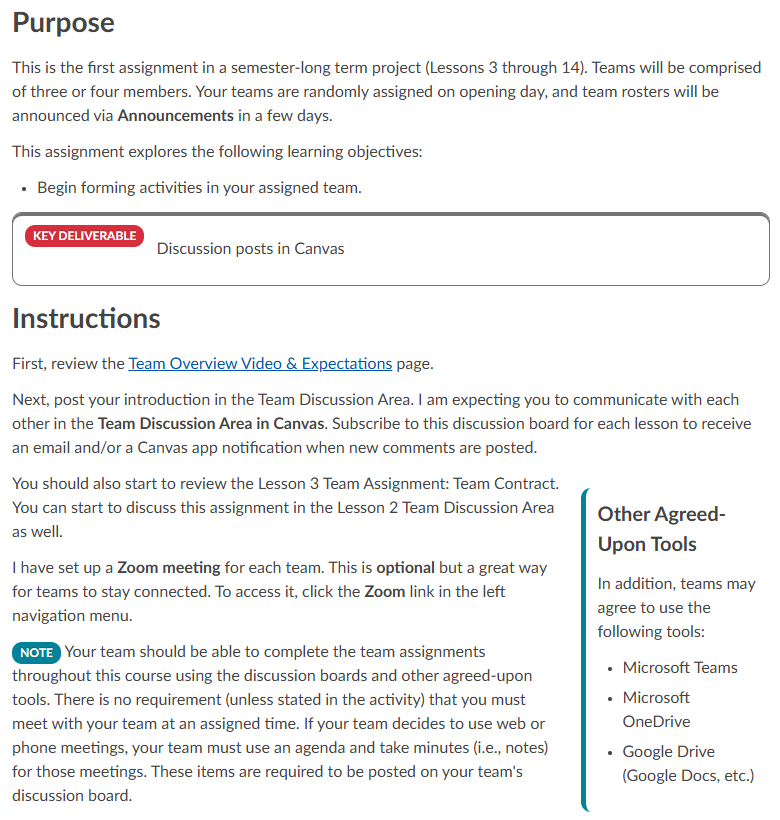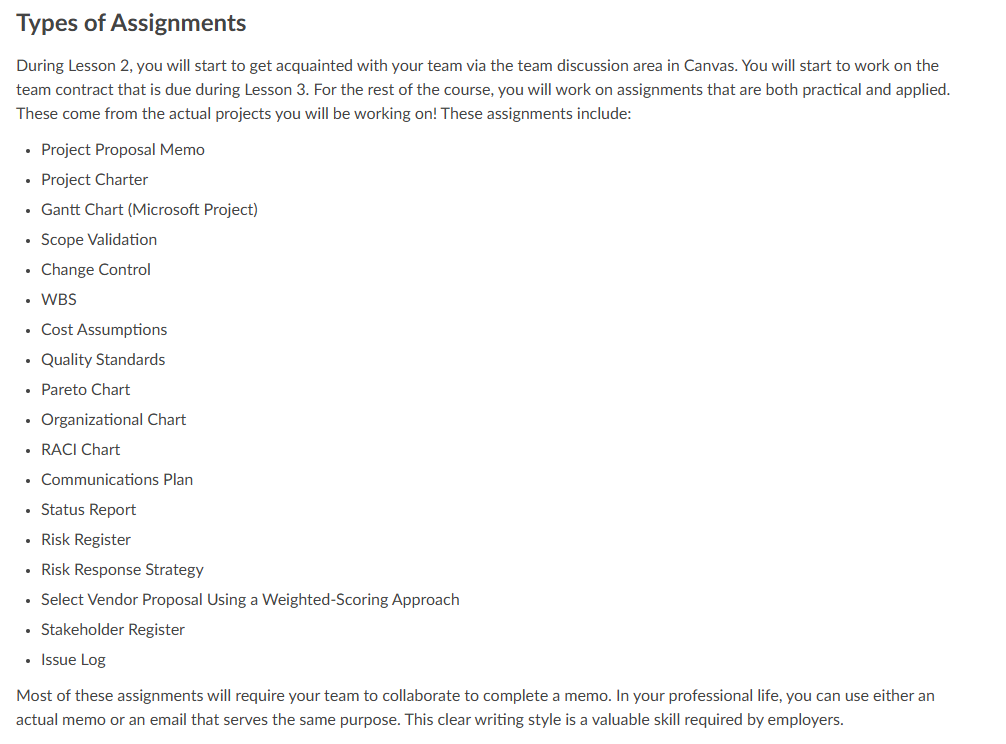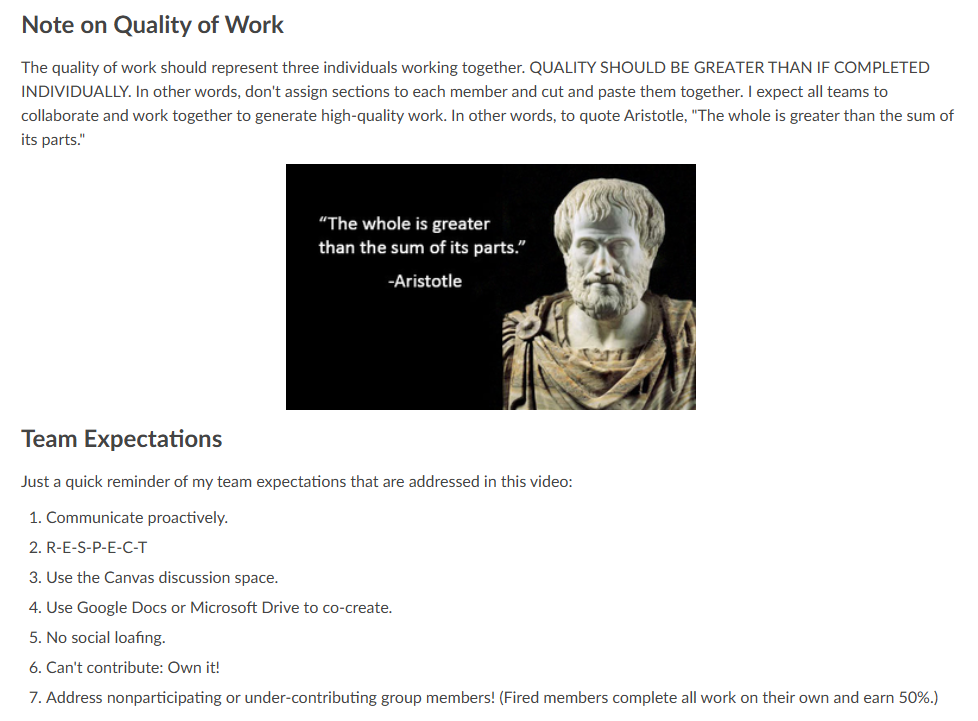Building Workplace Skills with a Team Project
Overview
Students work together as a project management team to complete a semester-long case study.
Why Use This?
This activity helps students build essential workplace skills in communication, teamwork, and problem-solving. It also gives them concrete examples they can reference in interviews for internships, new jobs, or promotions. Through the project and its targeted assignments, students demonstrate their ability to collaborate effectively and produce common project management deliverables—just as they would in a professional setting.
⭐What Students Say
Students consistently praise the assignment’s realism, noting that it feels like “actual project work” rather than an academic exercise. While the occasional team members groups to address issues professionally. Overall, students report greater engagement, stronger teamwork skills, and a deeper understanding of the analyst’s role across the project lifecycle.
How Does It Work?
Early in the course, students introduce themselves in a team discussion area and draft a team charter that outlines their roles, communication methods, and how they will handle non-participation. This contract sets expectations for how they will work together throughout the semester.
Each week, students complete assignments that mirror real-world project management tasks, such as writing a project proposal memo, creating a Gantt chart, compiling a risk register, developing a stakeholder plan, and maintaining an issue log. Many of these assignments require students to collaborate on professional-style written communication, such as a memo or email, just as they would do in the workplace.
By the end of the semester, students will have worked together to advance the project and apply a variety of project management tools to realistic scenarios.
Review project components by clicking on the tabs:
Keep In Mind
- Remind students that the quality of their written work should reflect a true team effort. It should be cohesive, rather than written individually and cut and pasted together.
- Consider recording short videos for students to explain communication expectations, preferred document formats, and how to handle group members who are not participating.
- Use existing case studies or AI tools to create scenarios with complexity and realistic details that engage students and align clearly with the course content and learning objectives.
- Align each week’s learning objectives with specific assignments so students can immediately practice what they’ve learned.


